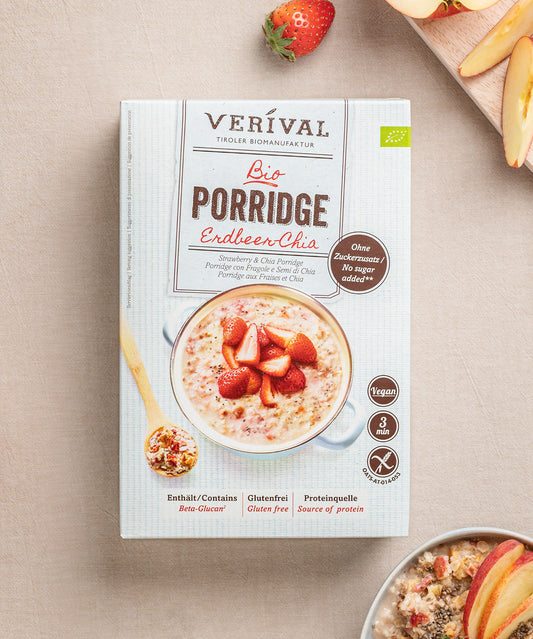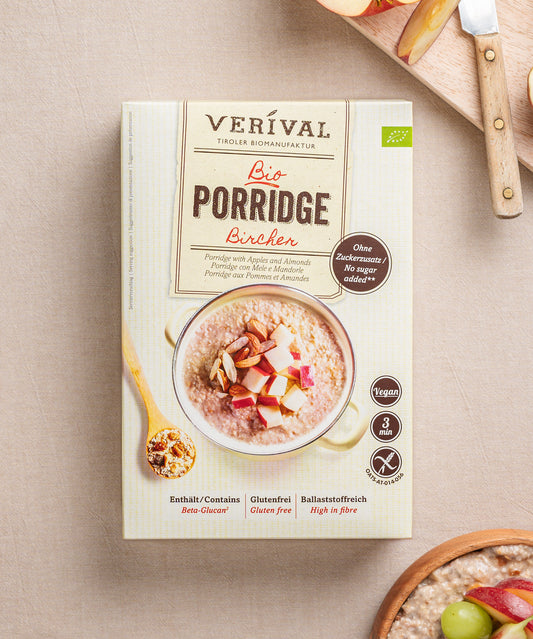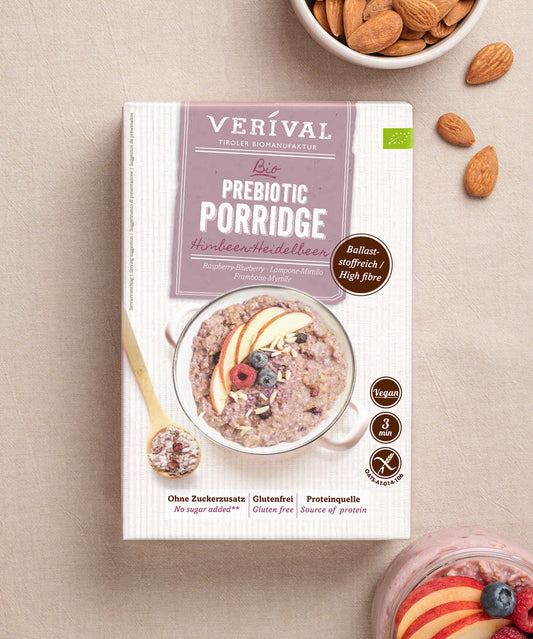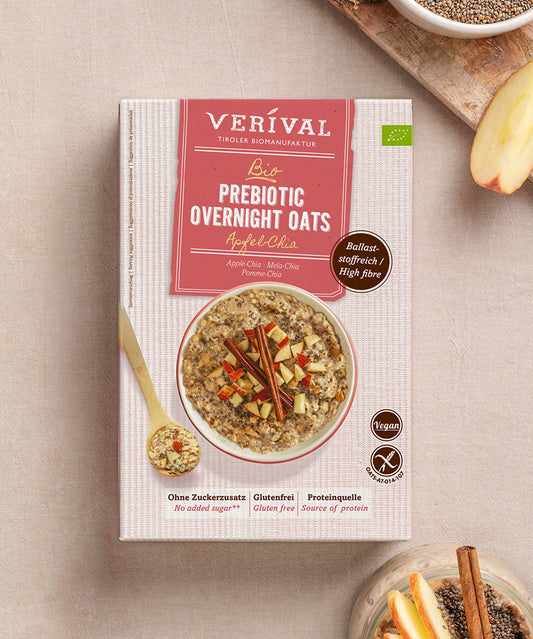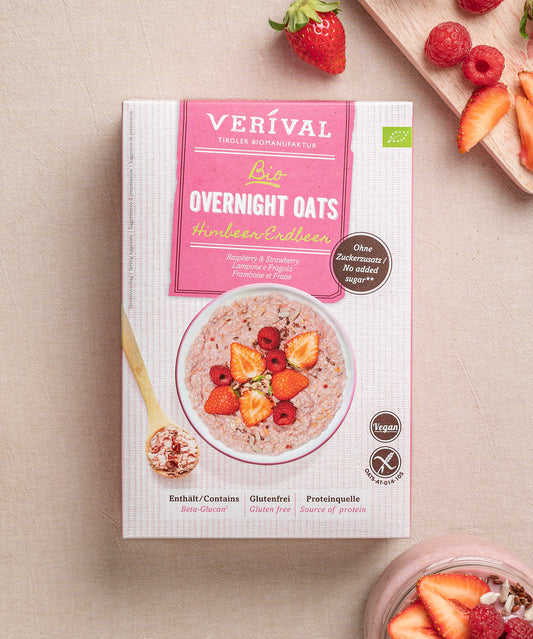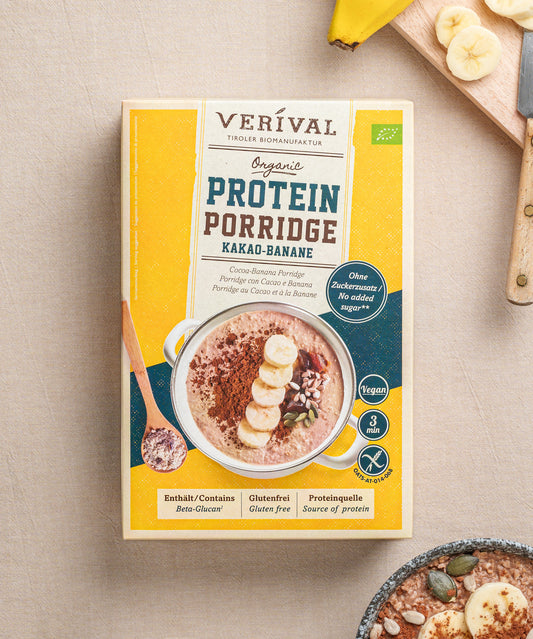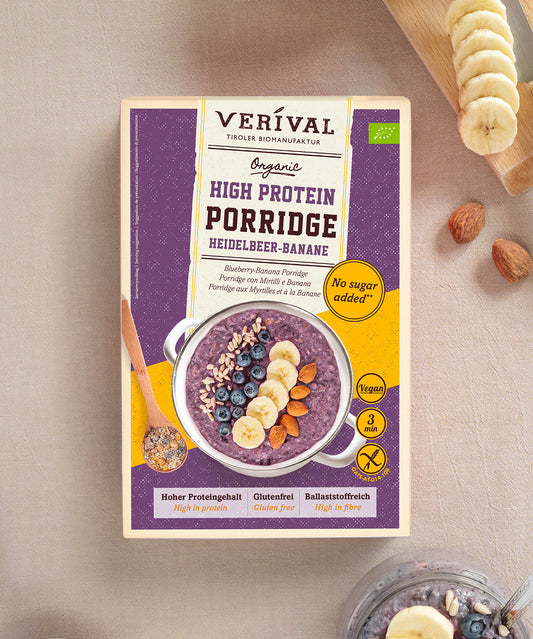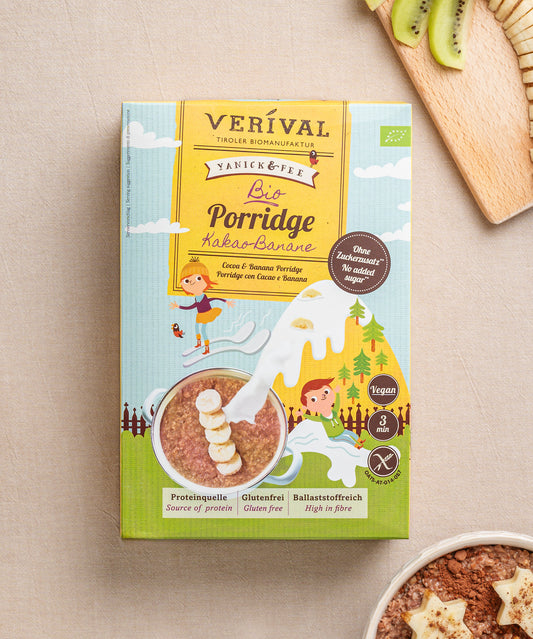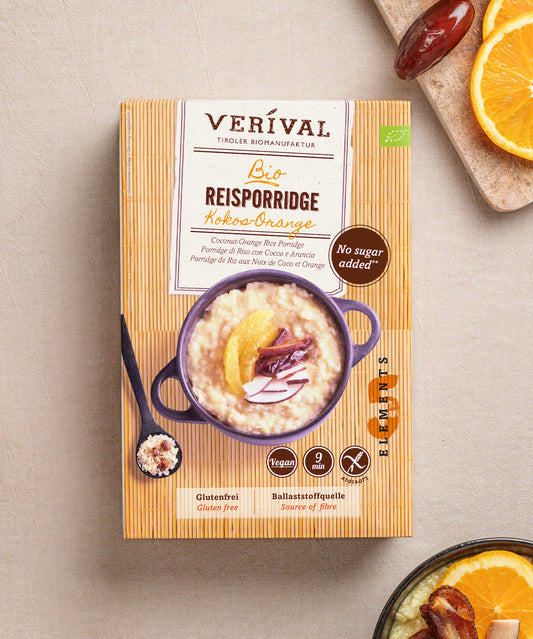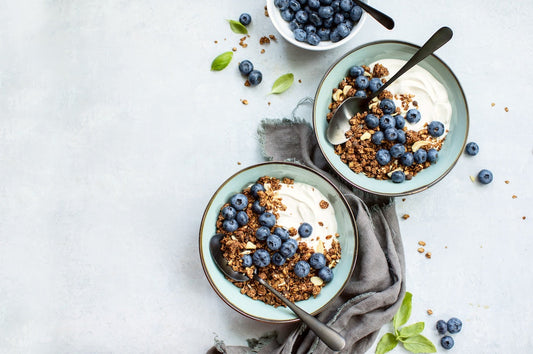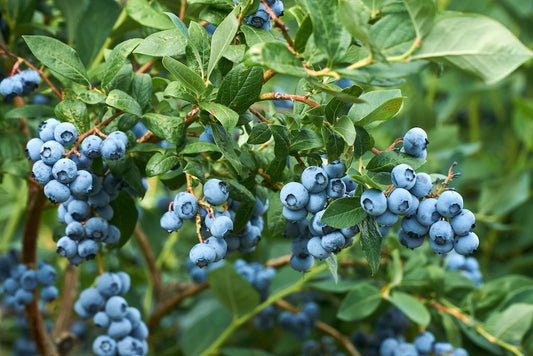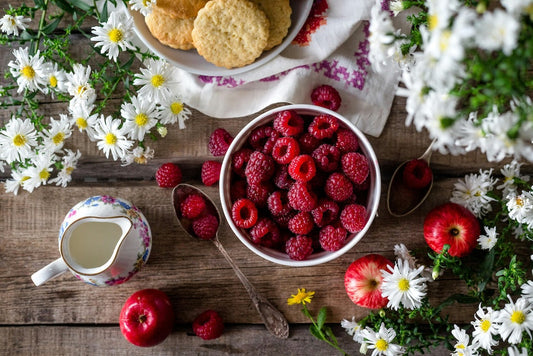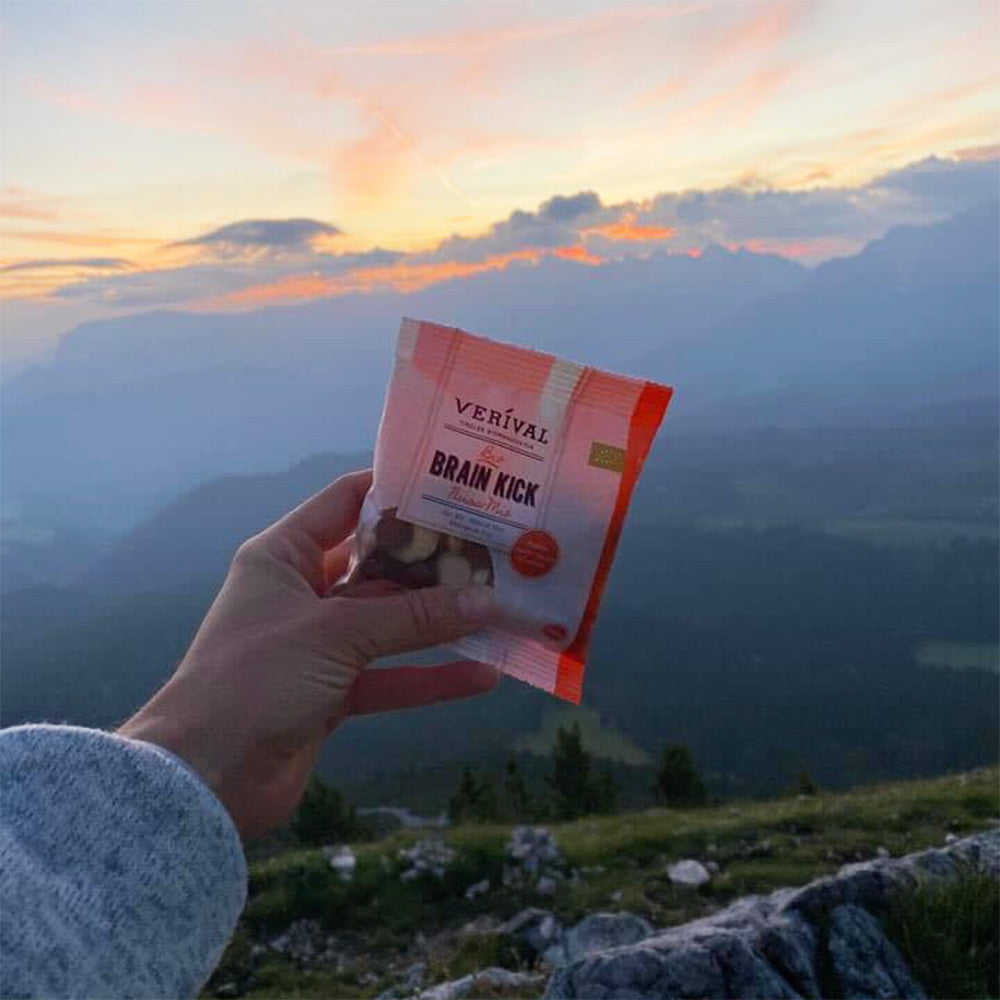Introduction to prebiotics
Prebiotics play an important role when it comes to intestinal health and they affect our general well-being. They are found in certain foods and, as a supplement to probiotics, they ensure healthy gut flora. Find out exactly what prebiotics are, how they are related to probiotics and why you should incorporate them into your diet in this blog post.
Prebiotic breakfast from VERIVAL - discover it now!
What are prebiotics?
Prebiotics are indigestible fibres in food that serve as food for the good bacteria in the intestines. Among the best known forms are inulin, which occurs for example in chicory or Jerusalem artichoke, and pectin, which is found in fruits such as bananas and apples, among others.
Why are prebiotics important?
Prebiotics are important because they support intestinal health. They promote the growth of healthy intestinal bacteria and at the same time reduce the proliferation of pathogenic bacteria. In this way, they maintain the healthy balance of the intestinal flora and ensure a strong immune system. In addition, a healthy gut is essential for well-functioning digestion and the absorption of nutrients.
Synergy of prebiotics and probiotics
Probiotics and prebiotics are closely related, because prebiotics serve as food for probiotic bacteria and thus support the growth of intestinal flora. So for intestinal health, the two are an unbeatable team. When prebiotics are enriched with probiotic ingredients, they are called synbiotics.
The relationship between prebiotics and probiotics
Probiotic products contain important microorganisms that can also be found in the intestinal flora. These include, for example, lactic acid bacteria, also known as lactobacilli, or bifidobacteria. Scientific studies suggest that the probiotics in our food support the natural probiotics in the intestines in their work and regulate the pH value in the intestines. They are found in fermented foods such as sauerkraut, kimchi, kefir or yoghurt, but are also often taken as food supplements to rebuild an intestinal flora that has become unbalanced.
Prebiotics, on the other hand, do not contain any living microorganisms. They are indigestible food components that serve as food for the healthy bacterial strains in the intestines, enabling them to multiply. Among other things, this leads to improved digestion, optimal absorption of nutrients and more effective control of pathogens. All of this has a positive effect on health and well-being.
How prebiotics support probiotics
Since prebiotics serve as food for probiotics, they promote the growth of these healthy intestinal bacteria. So if you eat prebiotic foods, you are helping probiotics to multiply and subsequently benefiting from all the positive effects of a healthy intestinal flora.
Prebiotics in your diet
To benefit from the advantages of prebiotics, a balanced diet should definitely include prebiotic foods. It's particularly easy to incorporate them at breakfast time, as they are mainly found in plant-based foods and especially in carbohydrates. But before we talk about how you can incorporate prebiotics into your daily diet, let's first look at which foods contain them.
Prebiotic-rich foods
There are numerous foods that are prebiotic. We have summarised the most important ones for you:
- Oats: Oats contain beta-glucans. These are soluble fibres that support the growth of probiotics in the gut.
- Bananas and apples: Both types of fruit contain pectin, which promotes the growth of healthy intestinal bacteria.
- Chicory, artichokes and salsify: These vegetables contain inulin, one of the best-known prebiotics.
- Onions and garlic: Both provide both inulin and fructooligosaccharides (FOS), which stimulate the growth of healthy bacterial strains in the gut.
- Flaxseed: Flaxseeds also contain important dietary fibres that serve as food for intestinal bacteria. Just like onions and garlic, they contain mainly inulin and FOS.
- Legumes: The versatile legumes, such as beans, lentils or peas, are also rich in fibre, which is good for intestinal health.
How to integrate prebiotics into your daily diet
As already mentioned, it is particularly easy to incorporate prebiotics into your breakfast. For example, in the form of porridge with an apple or banana. The oats provide beta-glucans and the fruit contains pectin. If you also add flaxseed as a topping, you will have integrated inulin and FOS into your breakfast.
Another breakfast idea with prebiotic ingredients is the classic Bircher muesli. You should also make sure to include prebiotic foods in your lunch, dinner and snacks. For example, you could cook up a delicious vegetable stew with chicory and beans or a spicy chickpea curry.
Basic recipe: prebiotic porridge
Ingredients
- 50 g Verival prebiotic porridge
- 120 ml hot water or hot milk
- Toppings of your choice, such as raspberries or blueberries.
Preparation
- Put the prebiotic porridge in a bowl.
- Pour the hot milk or hot water over the porridge.
- Leave the porridge to stand for 3 minutes and stir it.
- Ready!
Prebiotics and gut health
As mentioned above, prebiotics are important supporters of a healthy gut because they serve as food for healthy gut bacteria. But they can do much more.
The role of prebiotics for gut health
We already know that prebiotics promote the growth of beneficial gut bacteria and thus contribute significantly to gut health. They strengthen the intestinal flora and thus also support the immune system. But they are also a type of fibre that has further positive effects on the gut.
How prebiotics support the gut
In their role as food suppliers for probiotics, prebiotics stimulate the growth of healthy intestinal bacteria and thus promote a balanced intestinal flora. But they also bind water and thus increase stool volume. This stimulates intestinal motility, ensuring that toxins do not remain in the digestive tract for too long and are quickly transported out of the body again. A low-fibre diet, on the other hand, can lead to constipation. Due to their multiple functions, prebiotic fibres can reduce the risk of irritable bowel syndrome and other intestinal disorders.
Try it now – prebiotic porridge from VERIVAL!
Frequently asked questions
What are the best sources of prebiotics?
Prebiotics are mainly found in carbohydrates. The best-known prebiotic foods include oats, chicory, artichokes, apples, bananas, onions, garlic, linseed, pulses and Jerusalem artichokes.
How can I incorporate prebiotics into my diet?
Prebiotics are found in high-fibre foods. So try to add as much fibre as possible to your diet. For breakfast, for example, you could have muesli made from oats, fruit and yoghurt. Salads with chicory or artichokes also have a prebiotic effect. You can also easily incorporate pulses such as beans, lentils or peas into your lunch or evening meal.
How do prebiotics support gut health?
Prebiotics nourish healthy gut bacteria, thereby promoting their growth. However, they also stimulate intestinal motility, which has a health-promoting effect on the gut.
What is the difference between probiotics and prebiotics?
Probiotics contain micro-organisms such as lactic acid bacteria or bifidobacteria. These healthy bacteria also occur naturally in the gut. Prebiotics, on the other hand, are dietary fibres that serve as food for the healthy bacterial strains in the gut and thus promote their growth.
In which foods can prebiotics be found?
Prebiotics are found in fibre-rich foods. In particular, they are found in oats, chicory, artichokes, apples, bananas, onions, garlic, flaxseed, legumes and Jerusalem artichokes.
Are oats prebiotic?
Oats contain the prebiotic beta-glucan and therefore have a prebiotic effect.
When should you take prebiotics?
Prebiotics occur naturally in our food and are an essential part of a healthy diet due to their many health benefits. They are particularly recommended for digestive problems such as constipation. It is important that you also drink enough fluids with them, otherwise they will have the opposite effect.


